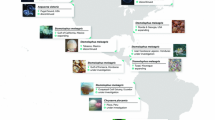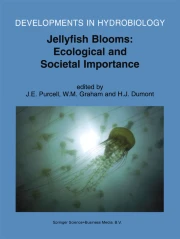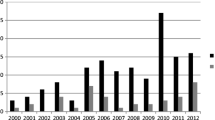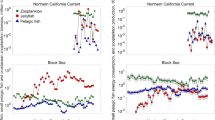
Access this book
Tax calculation will be finalised at checkout
Other ways to access
About this book
The literature reviews and research papers in this volume explore the interactions between jellyfish and humans. Papers cover the medical aspects of jellyfish stings, jellyfish as human food and jellyfish fisheries, interactions of jellyfish and fish, effects of environmental changes on jellyfish, effects of introduced ctenophores on the Black Sea ecosystem, factors causing increases or concentrations of jellyfish, and others aspects of jellyfish ecology. This is an important reference for students and professional marine biologists, oceanographers, fishery scientists, and aquarists.
Similar content being viewed by others
Table of contents (27 papers)
-
Front Matter
-
Jellyfish and Human Enterprise: Fisheries and Tourism
-
Jellyfish and Changing Ecosystems
-
Jellyfish Reproduction and Population Biology
Editors and Affiliations
Accessibility Information
PDF accessibility summary
Bibliographic Information
Book Title: Jellyfish Blooms: Ecological and Societal Importance
Book Subtitle: Proceedings of the International Conference on Jellyfish Blooms, held in Gulf Shores, Alabama, 12–14 January 2000
Editors: J. E. Purcell, W. M. Graham, H. J. Dumont
Series Title: Developments in Hydrobiology
DOI: https://doi.org/10.1007/978-94-010-0722-1
Publisher: Springer Dordrecht
-
eBook Packages: Springer Book Archive
Copyright Information: Kluwer Academic Publishers 2001
Hardcover ISBN: 978-0-7923-6964-6Published: 31 October 2001
Softcover ISBN: 978-94-010-3835-5Published: 21 October 2012
eBook ISBN: 978-94-010-0722-1Published: 06 December 2012
Edition Number: 1
Number of Pages: XVIII, 333
Topics: Freshwater & Marine Ecology, Oceanography, Ecology, Atmospheric Protection/Air Quality Control/Air Pollution, Food Science



